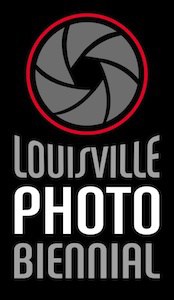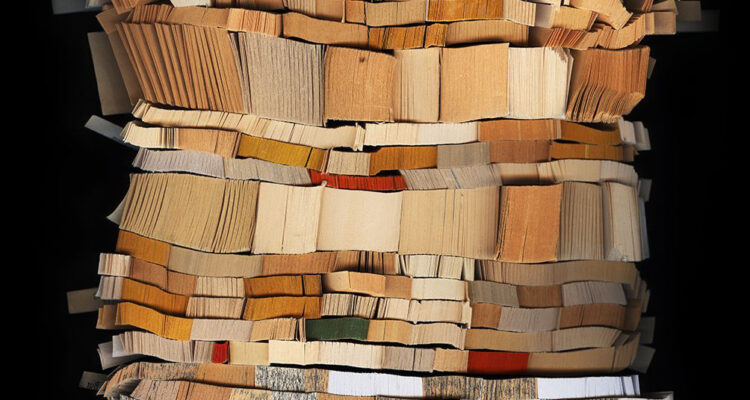
715 West Main Street
Louisville, KY 40202
(502) 217-6300
www.21cmuseumhotels.com
Hours: Wednesday – Sunday, 10 am – 5 pm, Monday & Tuesday CLOSED
Truth or Dare: A Reality Show
Featuring Sebastiaan Bremer, Mark Fox, Ann Hamilton, Miler Lagos, Rafael Lozano-Hemmer, Charles Matton,Youssef Nabil, Luis González Palma, Alejandro Almanza Pereda, Miguel Angel Ríos, Shahzia Sikander, Federico Solmi, and Paolo Ventura.
Dates: March 2020 – November 30, 2021
https://www.21cmuseumhotels.com/museum/exhibit/truth-dare-reality-show/
Events: October 28, 5-9 pm, Concurrent receptions at 21c Museum Hotel, Moremen Gallery, and KMAC Museum with River City Tintype Portrait Sessions at 21c
Truth or Dare: A Reality Show features artworks in a variety of media, including lens-based works by Sebastiaan Bremer, Mark Fox, Ann Hamilton, Miler Lagos, Rafael Lozano-Hemmer, Charles Matton, Youssef Nabil, Luis González Palma, Alejandro Almanza Pereda, Miguel Angel Ríos, Shahzia Sikander, Federico Solmi, and Paolo Ventura.
Highlighting uncertainty and contradiction, the artworks featured inTruth or Dare: A Reality Show emphasize the importance of questioning both knowledge and belief by utilizing illusion to entice, entertain, and explore the terrain between fact and fiction, presence and absence, reality and imagination.
The suspension of disbelief is invoked in works that simulate games, maps, and tricks of the eye and hand—not to deceive, but to engage and connect. A ping-pong table altered with a mirror for a game of one-on-one by Trong Gia Nguyen, Charles Matton’s hologram figure projected in a miniature library, and Addie Wagenknecht’s flower vase crafted from 3D printed Liberator guns are at once playful and prescient critiques of how and where we search for knowledge, meaning, or value. Facing continuing global strife, political instability, and economic disparity, the artists included in Truth or Dare speak truth to power through unconventional, often playful juxtapositions of imagery and materials: Anthony Adcock’s steel Column is actually oil paint on wood; Ben Jackel’s drone sculpture is rendered in mahogany and graphite; Pedro Reyes’sLady Liberty (as Trojan Horse)resembles an oversize wooden toy replica of the iconic public sculpture, presented on an army tank-base, carrying the torch of peace and freedom into battle. Rafael Lozano-Hemmer’s interactiveRedundant Assembly subverts surveillance technology by offering viewers unexpected reflections of themselves that melt together the features of multiple participants, effectively denying fixed identity. Gavin Nolan’s painting, A Warrior Jungle Whiner, is a portrait of a corporate executive, filled with symbolic, unsettling clues from popular culture and art history, while Federico Solmi’s cartoonish video animations feature a recognizable cast of political, religious, and cultural figures whose corruption and cruelty is showcased in searing parodies; both reveal how those in power obscure truth and manipulate public opinion, effectively playing with the people and resources they control.
Images of natural phenomena do not depict existing environments, but project fantasies or fears: Húbert Nói Jóhannesson offers an ode to desire in his Malverk af malverki [Painting of a Painting], while Leandro Erlich’s visions of skies once seen or imagined above Venice render visible the ethereal mysteriousness of misting clouds. Vibha Galhotra’s Earth 1978 is woven from ghungroos, bells traditionally worn by classical Indian dancers to“make their presence felt in the natural world.”Now, ghungroos are no longer necessary; the effects of human behavior on the planet are evident nearly everywhere. Galhotra’s earth shows no political divisions, only the landmasses and weather systems that affect everyone, while the bells that were once intended to announce a human presence have gone silent.
Today, cartography is a relic, replaced with global positioning systems that describe geography through virtual, screen-based information that appears and disappears in a keystroke. If maps and books have outlived their original use, what truth might they still tell? Ann Hamilton’s photograph of sections of paperback pages, sliced and stacked, references the loss of various languages worldwide today, while Brian Dettmer repurposes encyclopedias as materials for creating intricate sculptures of excavated illustrations and images that may reveal new insights. The texts that Jorge Méndez Blake extracts from Shakespeare’s Hamlet, and transforms from words on paper into three-dimensional brass wall sculptures are stage directions—short asides secondary to the lines spoken by the characters. And yet, the information they contain, [The Queen Falls] and [The King Dies] describe the most critical actions of the play. Blake’s practice of excavating and illuminating nuances in classical literature is both an homage to his sources and a socio-political critique. While today’s news holds our attention with tales of the latest scandal and intrigue, the truthful information we need to know may well embedded within another drama, shared aside and offstage
As the notion of alternate facts proliferates in the media, the alternate fictions of art may speak more honest, deeper truths. As artist Shahzia Sikander asks, “Because what are we? What is real? When you think in terms of narrative, and how history is determined through narrative, how real is that narrative?”
What Lies Beneath
Featuring Vinhay Keo, Nate Lewis, Mohau Modisakeng, Stephanie Syjuco, Hank Willis Thomas, and Cosmo Whyte
Dates: April 2021–December 31, 2021
https://www.21cmuseumhotels.com/museum/exhibit/what-lies-beneath/
Manipulating the material surfaces and sources of their imagery, the artists featured in this exhibition of recent photo-based works reveal intersections between identity, migration, trauma, and memory, bearing witness to past and present. In the context of 2020-2021, excavation, as both metaphor and process, is essential to the personal and collective healing all of these works visualize.
Cosmo Whyte and Hank Willis Thomas appropriate and obscure archival images through processes that invite active participation to decode: Whyte’s Stretch Marks and Keloids is based on photographs of West Indian women participating in a 1940s Empire Day, which he stretches through a drawing process, scraping the surface to reveal white paper pulp beneath. Untitled (Race Riot with Interference) belongs to Thomas’s body of work that uses retro-reflective screen-printing technology to obscure archival press photographs of public events that resolve only through flash photography. The still-life imagery in Stephanie Syjuco’s Neutral Orchids series has been grey-washed before being captured by her camera: flowers are sprayed with industrial grey primer paint and then shot against a photographic neutral grey seamless background. Syjuco’s use of photographic color calibration charts—utilized by photographers to determine neutral or correct color—suggests that no hue is truly neutral, and embeds a historical critique within the creation and presentation of her works.
The body keeps score in works by Vinhay Keo, Nate Lewis, and Mohau Modisakeng, enacting or reenacting trauma, historical, inherited, lived, and imagined. In Keo’s Self-Purgation, the artist uses shredded paper as a metaphor for the constant reporting and examination of his personal information and the bureaucratic processes to which immigrants are subject. Lewis’s surgically precise patterns that embellish his subjects suggest a deep knowledge and reverence for the body, for how it is inhabited, experienced, and judged. In his multi-media project, Zion, Mohau Modisakeng examines the fraught and violent history of the United States through choreographed performances through historically important public spaces for New York City’s African-American communities. In the final scenes of the video, the performers gather in Central Park, which from 1825 to 1855 was known as Seneca Village, a community of predominantly free Black property owners. As Manhattan expanded, the villagers were displaced and their land repossessed. Who knows what was left behind, what still lies beneath?
This exhibition is presented in conjunction with the 2021 Louisville Photo Biennial.
Facebook: 21cLouisville
Twitter: @21cLouisville
Instagram: 21chotels
Pinterest: pinterest.com/21cMuseumHotels

